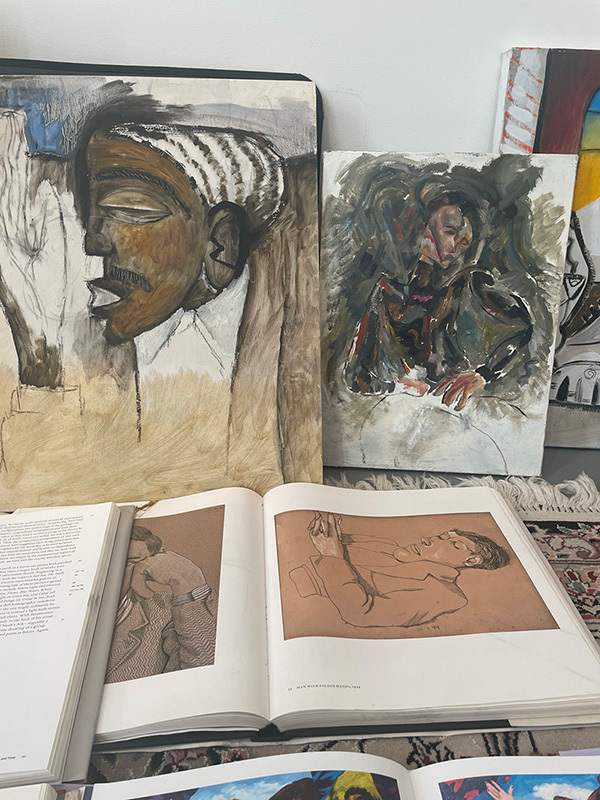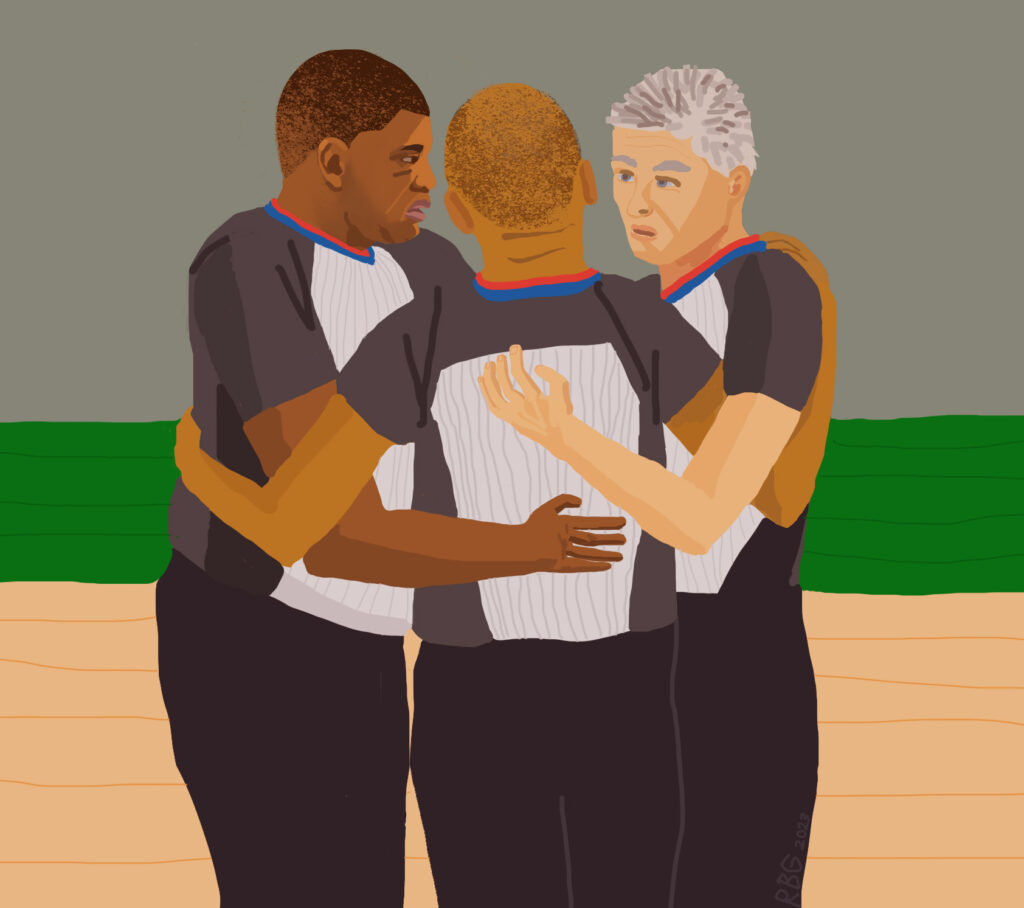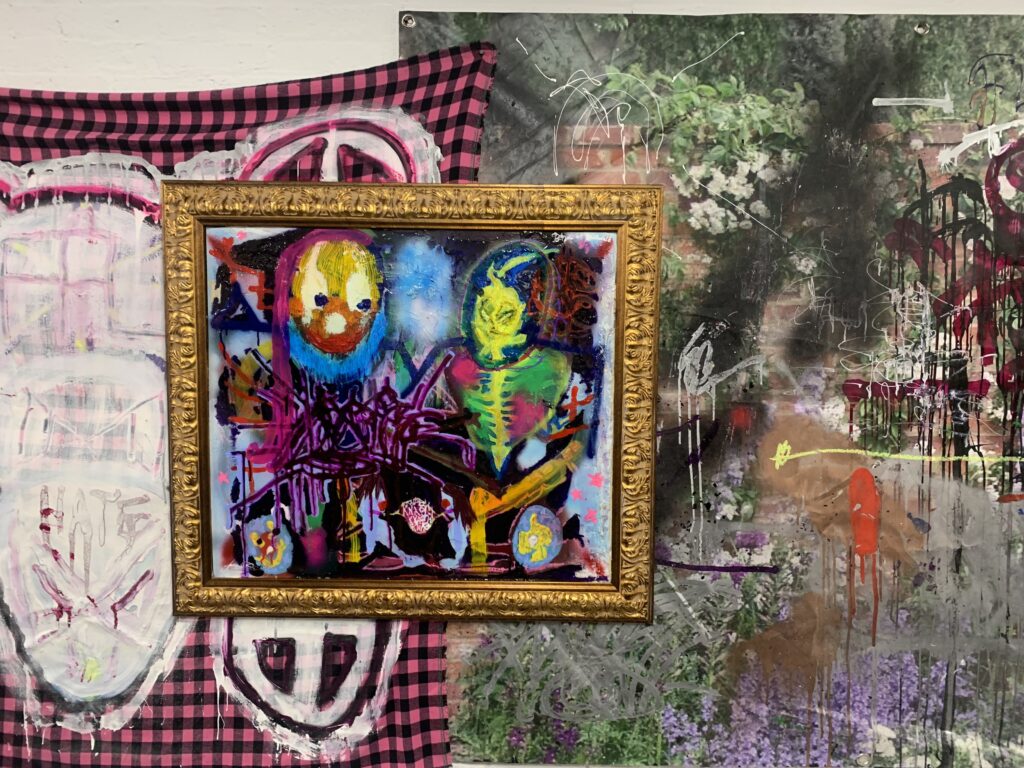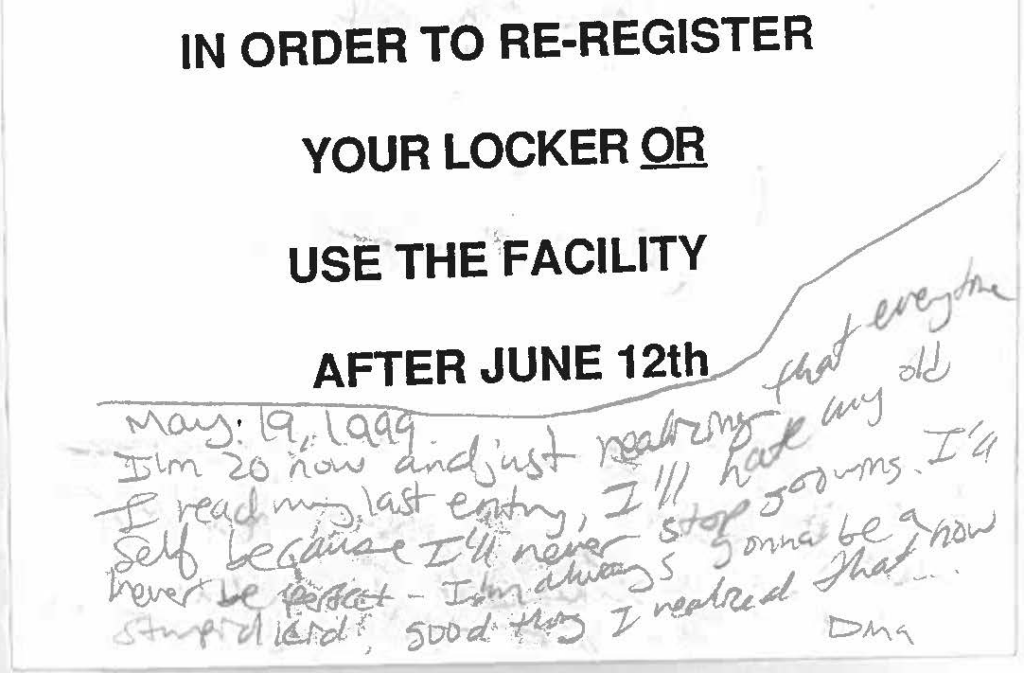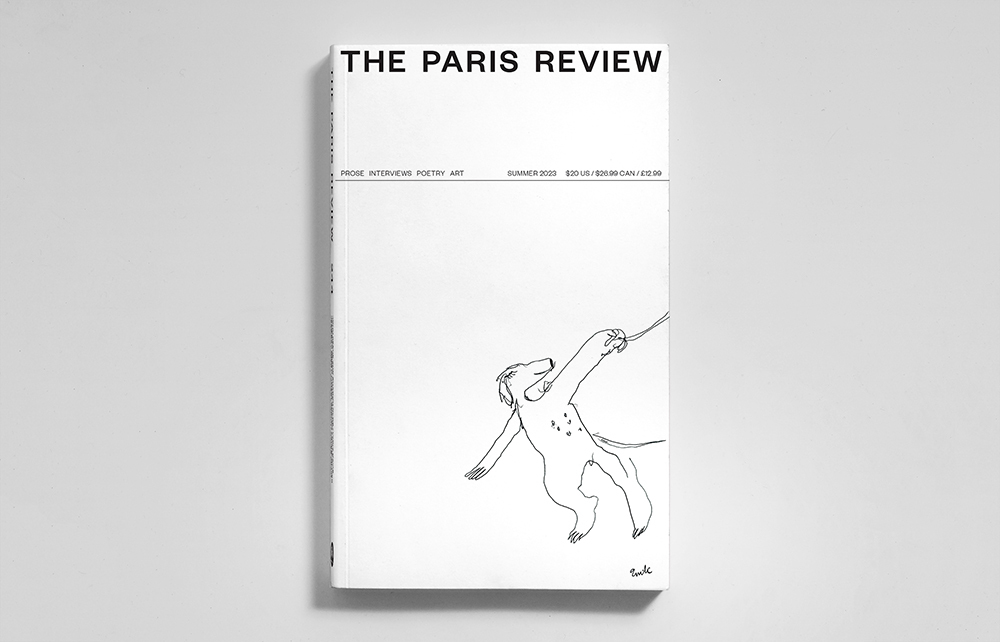Book Censorship News: June 16, 2023
Launching with the thing that is most worrying:
the kids are not okay in this era of nonstop censorship and legislation of them.After a slate of books were removed from Gardner Edgerton schools (KS), a student challenged the Bible. The board did not even go through the review process and denied the challenge. This isn’t how policies work, school boards.
You’ve gotta apply the standard across all challenges.“It’s un-American,” One woman said. “These library resources promote diversity, equity, and inclusion for social and emotional indoctrination.”
That’s a real quote about why books should be banned from Central York Schools (PA) as the district now looks through its SEVENTH iteration of policy.Hanover County, Virginia just updated their school library policies and
immediately banned 17 books.Essex Library (CT) looks like it got hit by Hide the Pride,
as a patron took down their Pride display.Ferndale Public Library in Michigan was
hit by Hide the Pride.A mother complaining about books at the Caro Library (MI — public) says the standard of what kids can look at on the computer should be the standard for titles available in the library. Indeed,
those sex ed books would be perfectly fine under your own damn standard. This week’s board meeting was canceled because
they did not have enough room to hold it.Elmhurst Public Schools (IL) avoided a vote to eliminate use of passages from American Street from 9th grade classroom study. This school has been under nonstop attack from “Elmhurst Parents for Integrity in Curriculum” and their cohort for years.
This is just the latest grievance.“The Wake County chapter of Moms for Liberty [NC] filed challenges against 20 books that it says are not appropriate to be in school libraries. The county school system has rejected all 189 challenges on the grounds that they were not filed by parents at those schools.” This story is, of course, paywalled, but this is the short version of
what we all know to be the playbook.This headline is sheer gold: Utah Republicans defend book removal law while protesting district that banned Bible. Don’t dish standards you demand if you don’t like when those standards are applied universally.
This is why we don’t ban books.Laramie County School District No.1 (WY) got to hear from book crisis actors about
how schools aren’t doing enough to stop children from accessing books that “sexualize” them. I thought you people didn’t coparent with the government?“’These books are in the schools. So many people have said they aren’t there, but this is proof they are there.’ Rodriguez said that it is the parent’s job and the parent’s choice to determine what their child gets to see. Rodriguez said, ‘We are not going to stop until all these books are removed, and our schools are safe for our children to go to the library again.’”
They don’t ban books, though? This is Hernando, Florida, where the argument was not over the appropriateness of the poetry in Rupi Kaur’s books but some of the illustrations.In Staples High School (MA), the challenge of three books has finally been dropped.
All three will remain on shelves.Book lists — book lists! — were removed from the Omaha Public Library (NE) amid “confusion” and then restored.
This is self-censorship in action, whether or not that was the intent. It is the impact.“Hempfield School District’s [PA] board has no immediate plans to remove any library books but voted Tuesday to implement a set of policies that lay the groundwork for the board to review and potentially remove books containing content deemed sexually explicit or inappropriate.” You will note
they do not define what any of those words mean.Ludlow Schools (MA) are still debating a new policy that would open up the doors for book banning. Hey it’s “already in place in some Pennsylvania schools” is the clear sign this is being rammed by right-wing parents with affiliations to these groups and
the school isn’t just calling it what it is. The good news is, the measure
did not pass this week.Trempealeau Middle School library (WI) is currently debating whether or not to ban the nonfiction book Queer Ducks (And Other Animals) because, I guess,
science and facts are no longer allowed.Paywalled article, of course, but the Sebastian River High School (FL) is
trying to imagine what the library looks like when the book bans courtesy of Moms for Liberty and their friend Ronny empty the shelves. It’d be nice to read this, you know.In good news, Sacramento Public Library (CA) has
created a sanctuary library called the Lavender Library.While in Iowa, Covid Kim is
not going to help the libraries figure out what books are now illegal under the Moms for Liberty bill she passed. Good luck with that, and know that because the bill states that book challenges are no longer matters of public record, library workers won’t even know who is monitoring their collections and challenging them. Brain drain in Iowa used to refer to folks who went there for college — like me! — then left. Now it refers to the politics.The same
confusion and lack of guidance is making life for library workers in Indiana schools nearly impossible.In what now passes as good news,
Maine will not be implementing book ratings on school library titles.Greenville County Public Library (SC) was tasked with reviewing 24 books being challenged by the county GOP. Instead of doing that, they decided to implement a wide range of changes to collection policies,
INCLUDING BANNING THE WORD BANNED IN BOOK DISPLAYS.The Washington Post is complicit in the rise of book bans, given how much they’ve thrown things behind paywalls. That’s the case here, wherein we learn at least one district in Missouri — our friends at Nixa — is
planning to determine whether or not Maus will remain on shelves.“Ohio’s proposed ‘Parents’ Bill of Rights’ would require public schools to let parents know about sexuality content materials, give parents a chance to review them, and give parents the option to request alternative instruction.” Let me reiterate here something to make it clear. Parents have always been able to ask for alternative assignments. What they’re demanding is to be told about every book being taught in the classroom. In doing so, they are indeed co-parenting with the government, even though one of their very own rallying cries is they do not co-parent with the government. If they truly cared about parental rights and not co-parenting, they’d be asking their children what they’re doing in class and looking at class syllabi themselves…not demanding the school deliver it to them on a silver platter.
The arguments do not even make sense.Fontana Regional Library (NC) moves a book about sex for teens out of the teen area and into the adult area.
Great way to ensure the readers who need it will never see it.In Greater Essex County District School Board (Windsor, Ontario, Canada), the parental rights folks are
taking a page out of the U.S. bigot playbook, from books to gender identity. Pennridge Schools (PA) are
being sued by a local over the discovery they’ve been quietly banning books by checking them out over and over and over again to restrict access to students.“Eighty-six books that were donated to Spotsylvania’s Smith Station Elementary School [VA] in May have not yet been approved by the School Board and are under review, division spokeswoman Tara Mergener said Tuesday. Among the books, which were donated by teachers, librarians and school families, are a picture book about the orchestra by Courtney Woodward, who visited Smith Station in March; Don’t Let the Pigeon Stay Up Late, The Pigeon Wants a Puppy, and an Elephant & Piggie book by Mo Willems; Smile and Sisters by Raina Telgemeier; and titles from the Diary of a Wimpy Kid, Baby-Sitters Club, and Captain Underpants series.”
Why is the school board in charge of determining whether or not book donations are allowed? That belongs in the hands of the trained professionals, not the elected bigots (and don’t be fooled, that’s who is calling the shots in this community, where the board president suggested
burning books he disagrees with).Someone who wants to be on the school board for United 4 SCASD was caught breaking into the high school to take pictures of books in the library.
That is far more dangerous than the possibility a kid picks up Gender Queer (PA).“Monday, the Rochester Public Library Board of Trustees
adopted a resolution that condemns censorship and book banning in all forms, specifically focusing on LGBT+ material.” This is Rochester, Minnesota, and it is what all boards should be doing.Meanwhile in Austin Public Library (MN), the aggrieved are complaining about an upcoming drag storytime event. No one complained about this event in 2019, when it was the same queen involved.
Funny, that.York County Public Library (SC)
will not be relocating books the crisis actors claim are inappropriate.This article about how “conservative activists” who showed up to protest books in this Colorado are classified “by others” as a hate group.
The “others” are the SPLC, which has some expertise in this. But okay!Curious, here, that a board member of the ImagineIF Public Library (MT) who has been vocal about removing Gender Queer from the library and filed a complaint to do so is…
now on the state’s library commission.
This is a GREAT letter about all of these proposed policies across states and school districts that are amping up book bans.“The people who attended have cited the book Let’s Talk About It by Erika Moen and Matthew Nolan at different local city council meetings and past commission meetings. The book was available at Parkersburg South High School where they said it was removed after complaints were made. They said it is still available at the branches of the Parkersburg-Wood County Public Library.”
But I thought these people only didn’t want their naughty books at school libraries because they could get them at the public library? Huh, that (WV).Last fall, Downers Grove Public Library (IL) faced threats — including mailed bullets — over a drag event for teens. This June,
they’re hosting an LGBTQ+ legacy wall.This play of demanding the Bible be banned happening isn’t funny, actually, nor is it clever or a gotcha.
This time we’re in West Palm Beach, Florida, and the twist in this one is it’s a Rabbi seeking to get the Bible pulled. Satirically.
75% of the funding is being withheld from Samuels Public Library (VA), where a group has been claiming there is porn in the library. This group of people and
their joke of a website are why the library is having 3/4 of its budget withheld. We should be deeply concerned that 1. officials don’t bother doing their research on this being a game and 2. this is allowed to happen due to who they get on the board with sympathies for crisis actors.“The school board voted in a closed session Tuesday to fire Superintendent Jodi McClay. Her dismissal comes after the school board narrowly voted to remove a textbook that mentions gay rights and history from a kindergarten through 5th grade social studies program. The materials for the program contain the history of Harvey Milk, a county supervisor from San Francisco who was the first gay politician to be elected to office in California.” This is in California, and reread the statement.
The teacher was fired for…teaching history.This news just came out, but a middle school teacher in Charlotte, North Carolina, was
fired for teaching his honors 7th graders Dear Martin.Orem Public Library, Utah,
may see a lawsuit thanks to their banning of Pride and heritage month book displays. This particular public library has been having this battle since 2021, continued it into 2022, and here we are in 2023.“I was very disappointed that this year’s summer reading logo has the rainbow colors as the background,” reads the June 6 email, which was provided to the Weekly with the sender’s name redacted. “The rainbow colors have predominantly been used recently as representing the LGBTQ community and their Pride flag…WHAT does that even have to do with summer reading, especially for the children?” This is over a sticker at the Monterey County Public Library in California.
A rainbow on a sticker.This story is paywalled, but the Oak Creek, Wisconsin schools might ban “safe space” signs. They want to ban safe space signs.
They want. To ban. Safe space. Signs.In less mind-boggling news, a donor to the Boston Public Library (MA) has given a $1 million grant to
enhance its LGBTQ+ collections, resources, and services.Greeley-Evans Schools (CO)
will retain Extremely Loud and Incredibly Close and The Kite Runner.Daviess County, Kentucky saw several protestors outside the library, which was holding Pride events.
There was an even larger group of counter protesters.The new collection policy in Campbell County Public Library (WY) puts
every bit of responsibility for every book on the library director. This means anything with a whiff of “inappropriate” is now going to mean the director’s head. And by “inappropriate,” that means anything the board or a community member feels like challenging. You may
remember Campbell County Library from 2021, where librarians were threatened with jail over books some of the religious bigot community there did not like. The same Campbell County Library hired a right-wing “nonprofit” from Florida to completely dismantle their current collection policy at a public library.
County money being spent on bigotry. This story did not get enough attention and now, well, here we are.And lastly this week, in Greenville Public Library, South Carolina,
library workers cannot use the word “banned” in book displays.







